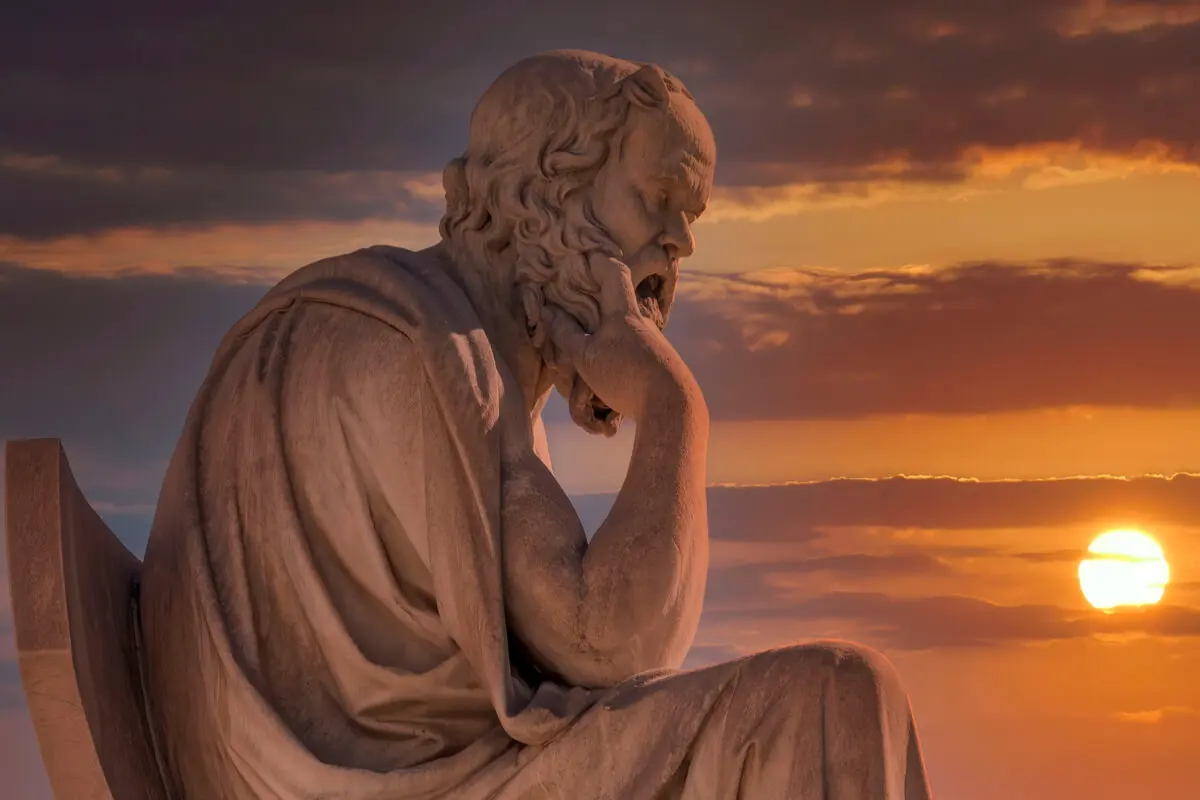Plato's Myth of the Cave: Meaning and Teachings


Written and verified by the philosopher Maria Alejandra Morgado Cusati
The myth of the cave is one of the most important allegories of philosophy that has left its mark on the thinking of Western cultures. In it, Plato addresses the origin of knowledge and the nature of reality based on his Theory of Ideas.
This myth has been widely studied and discussed throughout history. Even its teachings are still valid today. Let’s take a look at what it consists of.
What is Plato’s myth of the cave all about?
The myth of the cave appears in Book VII of The Republic, one of Plato’s most important works. Written in the form of a dialogue, it reflects a talk between Socrates and Glaucon (also a philosopher) about knowledge.
There, Socrates asks his interlocutor to imagine a group of men who have been chained in the depths of a cave since they were born. This means that they have no way of knowing either the origin or the reason for this situation.
The cave is divided in two by a wall. On one side is the room of the chained prisoners who can only look at the back wall. Meanwhile, on the other, behind the wall and hidden from the prisoners’ view, are other people carrying a variety of figures (animals, trees, mountains).
In turn, behind these people a fire burns that casts the shadows of these figures on the wall. It can be seen by the prisoners. Therefore, the chained prisoners can only see the silhouette of these figures reflected by the light of the fire.
Likewise, the bearers of the figures can talk to each other, causing an echo that reverberates inside the cavern. In this way, the prisoners see nothing but the shadows of the projected objects and hear nothing but the distorted echo of the voices and believe that what they perceive is the only reality.

We think you may also enjoy reading this article: Rhetoric: What It Is, What It’s Used For, and Some Examples
One of the prisoners leaves the cave
However, at one point, one of the prisoners dares to turn around and look beyond. At first, she or he feels dazed and annoyed by the light emitting from the bonfire. But then she or he decides to advance to the exit.
Each time the person advances, doubts, fear, and discomfort from the light seduce them with the possibility of returning to the shadows at the bottom of the cavern. However, little by little, the escaping prisoner gets used to it and continues with patience and effort until they manages to get out.
Once outside, the person’s eyesight adjusts to the sunlight. Then, they begin to see the real objects that make up reality. Suddenly, the fugitive wishes to share this experience with his or her companions. However, when he or she returns, they receive them with mockery, disbelief, and contempt.
Plato’s Theory of Ideas
The myth of the cave is an allegory of Plato’s theory of ideas, which affirms the existence of two worlds: the world of things and the world of ideas. The first is made up of everything we can experience through the senses. It’s characterized by multiplicity and by being pure appearance and constantly changing. Therefore, it’s false and deceptive.
On the other hand, the world of ideas is true, incorruptible, and immutable. The universal and necessary ideas dwell there, which are the essences of all that exists. Thus, the objects and bodies of the physical world are a mere imperfect reflection of this world.
Therefore, the myth of the cave is an allegory that reflects and helps us to understand the way in which Plato conceived the relationship between the physical and the world of ideas and how human beings move through them.
As expected, the cave represents the sensible world, the prisoners are human beings, and the outside world is the world of ideas where the essence of things and true knowledge is found.
Lessons from the Myth of the Cave
In general terms, the myth of the cave reflects several ideas:
- The existence of a truth that exists independently of people’s beliefs or opinions.
- The presence of deception in the sensible world, which leads people away from true knowledge.
- The discomfort, fear, doubt and discomfort experienced by the individual when he or she realizes that there’s a reality that he or she has previously been unaware of.
- The qualitative change that takes place in the individual once he or she has access to the truth, because once he or she knows the truth, there is no turning back.
- The skepticism of people who are engrossed in their beliefs and dogmas.
Meanwhile, the teachings of the myth of the cave are still tremendously valid nowadays. These can be reflected in the following ways.
Distorted knowledge
Nowadays, it’s very common for various media and social networks to disseminate distorted information about the facts. In doing so, they create disinformation in the general population.
Making an analogy with the myth of the cave, we would be the prisoners, while the people carrying the figures would be the disseminators of false information.
Likewise, with the Theory of Ideas, Plato emphasizes the ease of maintaining deception through appearance and through what seems obvious. In fact, much false information prevails today because of distorted or poorly executed presentation of evidence, which limits questioning or going beyond what’s being stated.
We think you may also enjoy reading this article: Discover the Interesting Relationship Between Buddhism and Mindfulness
The myth of the cave: Liberation
On the other hand, the self-liberation of one of the prisoners is similar to a personal revolution, which can be of any kind: leaving behind a harmful person, situation, ideology, or religion.
Moreover, the act of freeing oneself from chains can also represent a paradigm shift, implying a different way of knowing and approaching reality.

The ascent to truth
In the myth, the prisoner’s ascent to the external world causes him or her insecurity, discomfort and fear. This image perfectly reflects what’s involved in letting go of deep-rooted beliefs or dogmas.
The renunciation of old certainties and the opening to truths represents a costly and uncomfortable psychological process, which not everyone is willing to go through.
The return
Finally, the return of the ex-prisoner to the cave and the disbelief of his or her companions reflect the spread of new ideas in society, which are usually assumed, in the first instance, with confusion, contempt, or hatred. They’re ideas that question the dogmas that have structured society.
However, according to Plato, the individual who manages to access the truth has the moral obligation to bring the rest of the people out of ignorance and spread their knowledge.
A relevant myth
The myth of the cave is one of the great treasures that ancient philosophy has left to Western thought. Although it’s a very old text, it undoubtedly shows us ideas that allow us to reflect on reality and the way we move within it.
All cited sources were thoroughly reviewed by our team to ensure their quality, reliability, currency, and validity. The bibliography of this article was considered reliable and of academic or scientific accuracy.
- Partenie C. Plato’s Myths [Internet]. California: Stanford Encyclopedia of Philosophy; 2018 [consultado 06 may 2022]. Disponible en: https://plato.stanford.edu/entries/plato-myths/
- Platón. República, Libro VII. Traducción de C. Eggers Lan. Madrid: Editorial Gredos; 1992.
This text is provided for informational purposes only and does not replace consultation with a professional. If in doubt, consult your specialist.








